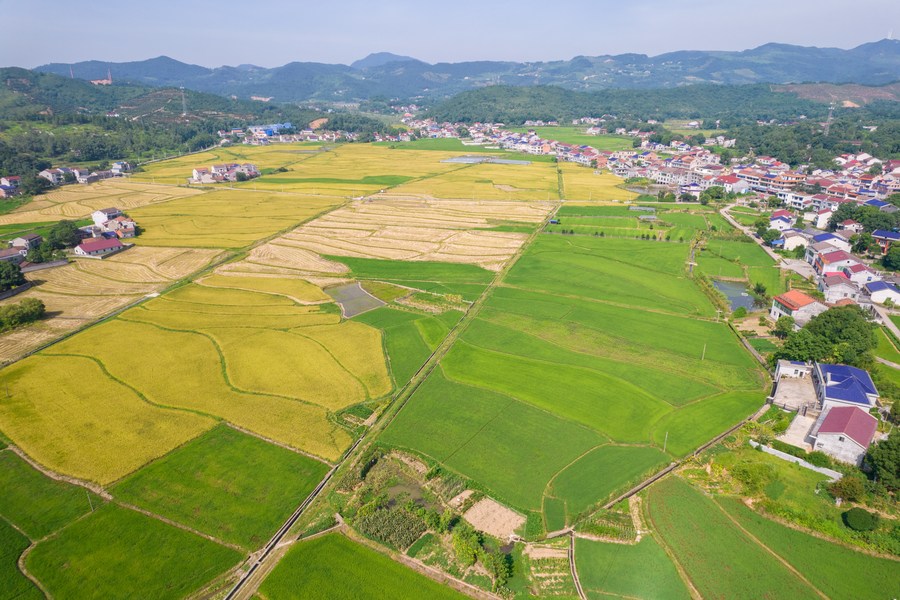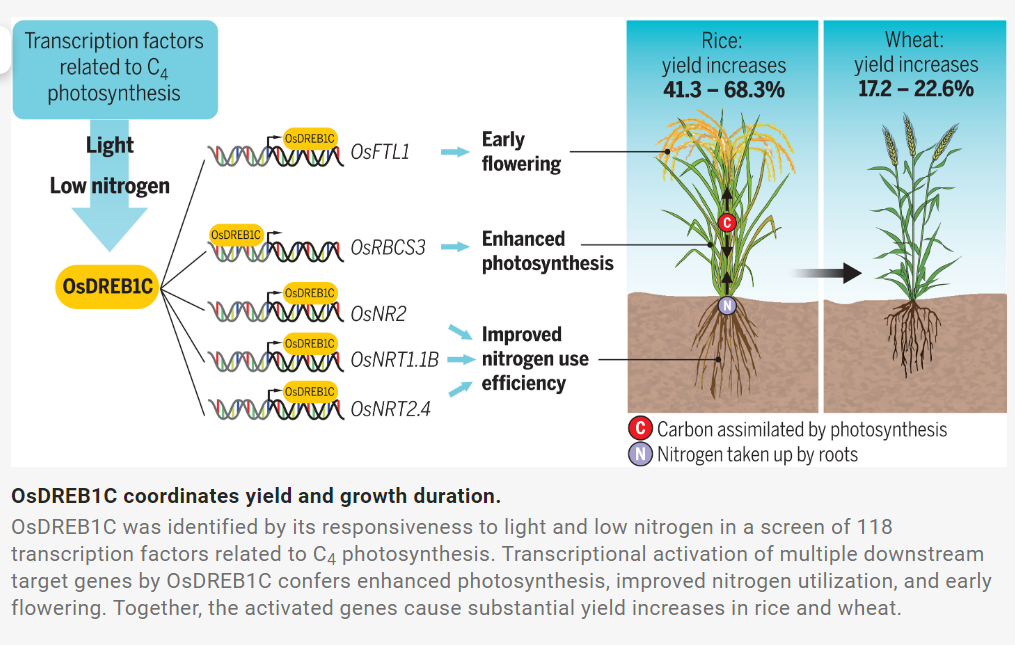
Originally posted 24 July 2022
Chinese scientists have found a gene in crops such as rice and wheat which can improve the efficiency of photosynthesis and nitrogen utilization and significantly boost grain yield.
The researchers enhanced the expression of the OsDREB1C gene in two rice varieties through genetic engineering technology. And they conducted field trials at three different sites in Beijing, Hangzhou, and Sanya in northern, eastern, and southern China, representing very different environmental conditions, from 2018 to 2022. The results showed that the yield of the two rice varieties increased by more than 30 percent. Their growth duration was also shortened.
In the experiment on a wheat variety, they found the OsDREB1C gene can increase its yield by more than 17 percent, and shorten its growth duration by three to six days, showing that this gene has the function of increasing yield and shortening the growth period of different crops.
The discovery made by a team led by researchers with the Institute of Crop Sciences under the Chinese Academy of Agricultural Sciences (CAAS) has been published online in the academic journal, Science.
Scientists believe the discovery, published online Friday (Beijing Time) in the academic journal, Science, could provide a potential solution for increasing agricultural productivity and efficient utilization of resources, and contribute to human food security.
Zhou Wenbin, leader of the research team, said a substantial increase in crop yield has been achieved since the 1960s through the breeding of new varieties and the improvement of cultivation and management technologies. However, in recent years, the per unit area yield of crops has increased slowly.
“We need to find new methods to coordinate the further improvement of crop yield and nitrogen use efficiency,” said Zhou.
Scientists have found that maize has a much higher yield than rice and wheat mainly due to their different photosynthetic pathways.
The research team examined 118 transcription factors associated with photosynthesis in maize and analyzed the related genes in rice with similar sequences. At last, they identified the key gene, OsDREB1C, that responds to both light and low nitrogen conditions, and thus they found the gene modulates both photosynthesis and nitrogen utilization.
The researchers enhanced the expression of the OsDREB1C gene in two rice varieties through genetic engineering technology. And they conducted field trials at three different sites in Beijing, Hangzhou, and Sanya in northern, eastern, and southern China, representing very different environmental conditions, from 2018 to 2022. The results showed that the yield of the two rice varieties increased by more than 30 percent. Their growth duration was also shortened.
In the experiment on a wheat variety, they found the OsDREB1C gene can increase its yield by more than 17 percent, and shorten its growth duration by three to six days, showing that this gene has the function of increasing yield and shortening the growth period of different crops.
Wan Jianmin, an academician of the Chinese Academy of Engineering, said the discovery provides a potentially valuable gene for crop variety improvement.
Yang Weicai, an academician of the Chinese Academy of Sciences (CAS), said the discovery of this gene undoubtedly has important scientific value and application prospects, providing an important genetic resource for cultivating crop varieties with a higher yield, higher nitrogen utilization efficiency, and early maturity.
This innovative research has provided a new approach for achieving a substantial increase in crop production and efficient utilization of resources. It is expected to be applied to rice, wheat, and other crops and vegetables in the future, which is of great significance in promoting sustainable and intensive agricultural production, said experts.
Qian Qian, head of the Institute of Crop Sciences under CAAS and also an academician of CAS, said the team will deepen their research on the key gene’s function and mechanism in main grain crops such as rice, wheat, corn, and soybean in the future for the development of new varieties.
OsDREB1C coordinates yield and growth duration.

Sources:
SCIENCE, 22 Jul 2022, Vol 377, Issue 6604. ‘A transcriptional regulator that boosts grain yields and shortens the growth duration of rice’ by Shaobo Wei et al. DOI: 10.1126/science.abi8455
People’s Daily, 23 July 2022. http://en.people.cn/n3/2022/0722/c90000-10126317.html
China National Center for Science and Technology Innovation, 2022-07-23.
http://en.ncsti.gov.cn/home/gridview/202207/t20220723_90080.html